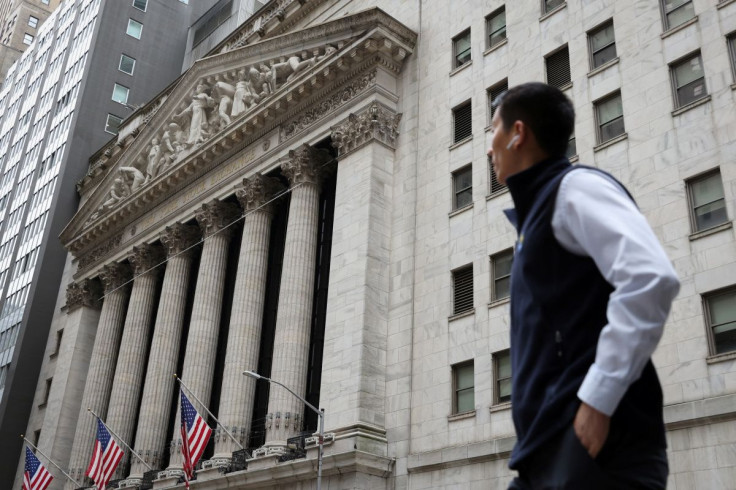Explainer-What Is A Bear Market?

The S&P 500 index, the most closely followed benchmark for U.S. equities on Wall Street, has slid this year as inflation jumped to its highest rate in 40-years.
On Monday, a steep selloff triggered by fears that the Federal Reserve will raise interest rates at its meeting on Wednesday above prior expectations left the S&P 500 down more than 20% from its record high in January, confirming in the vernacular of many on Wall Street that it is in a bear market.
But what does that term mean?
WHAT IS A BULL AND A BEAR MARKET?
On Wall Street, the terms "bull" or "bear" markets are often used to characterize broad upward or downward trends in asset prices. But not all analysts define bull or bear markets the same way, and some investors use the terms loosely.
S&P Dow Jones Indices defines a bull market in the S&P 500 as a 20% rise from its previous low. It ends at the final peak before a subsequent decline of 20%.
It defines a bear market as a decline of at least 20% in the S&P 500 from its previous peak. It ends when the index reaches its low before then going on to set a new high. S&P uses closing prices for its calculations.
Bull markets in both stocks and bonds are far more common than bear markets. While the S&P 500 has notched 12 bear markets since 1948, some bull markets have lasted 10 years or longer. U.S. bonds, meanwhile, were in a 40-year long bull market that some analysts say has only recently ended.
HOW DO YOU KNOW WHEN YOU SWITCH FROM ONE TO THE OTHER?
Bull markets in stocks typically coincide with an expanding economy or a rebound after a short-term slump.
Bear markets, meanwhile, often lead into a recession and last until investors think that the worst of the economic downturn is behind them. Nine of the 12 bear markets since 1948 have been accompanied by recessions, according to investment research firm CFRA.
HOW LONG DO BEAR MARKETS LAST?
According to CFRA, S&P 500 bear markets since 1946 have taken an average of 389 calendar days to bottom, and then another two years to return to their prior high.
But there is a broad range. The last bear market in early 2020 took only 33 days to bottom, while the dot-com bubble bear market 20 years ago required 929 days to bottom, according to CFRA.
WHAT ARE THE DEFINING FEATURES OF THIS ONE?
Previously highly valued growth stocks have been badly punished in recent months by investors worried that rising interest rates will force consumers to tighten their belts.
Within the S&P 500 technology sector index, 91% of stocks were currently down 20% or more from their highs as of Tuesday, including PayPal Holdings, which has now tumbled 77% from its record high last July.
Among stocks in the S&P 500 consumer discretionary index, 88% are in bear markets, including Etsy, down 77% from its record high, and Carnival Corp, down 68% from its high.
Within the communication services sector index, Facebook-owner Meta Platforms has slumped 57% from its 2021 high, and Walt Disney Co has fallen 50%.
The stock market's recent tumble has cooled valuations that in 2020 reached their highest level since the dot-com era. The S&P 500 is now priced at about 17 times expected earnings, which is in line with its average forward PE over the past 10 years, according to Refinitiv data.
© Copyright Thomson Reuters 2024. All rights reserved.





















